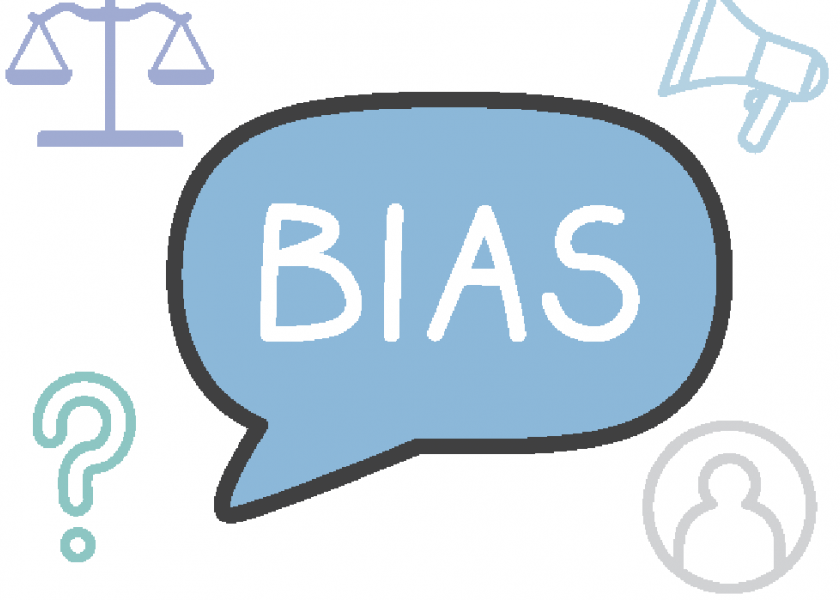The Power of New Blood: Challenge Biases to Improve Decision Making and Judgment Calls

As associates or owners, we participate in an ever-changing web of clinic interactions that are determined by our past successes, experiences, and interactions. Each decision we make is determined by how these experiences previously shaped us. As our career lengthens, our brain begins to learn what is the “right” response according to the patterns around us and how we usually respond.
Early in our career, pattern recognition and the actions that it leads to are conscious responses we are aware of. As our careers progress, our brain begins to recognize common patterns without the need for this conscious thought and to protect limited mental resources, it begins processing and acting upon these patterns unconsciously at a higher and higher rate. While it is an adaptively advantageous process, this intuitive thought is known to be at higher risk for the errors in judgment known as cognitive biases or deviations from rational conscious evaluation.
Cognitive biases exist within each of us and in every practice. Some go unseen, with little to no negative effects, while many others can have insidious effects. It is important veterinarians (both associates and owners alike) actively question their decisions, looking for cognitive biases such as four of the most common and influential medical examples reviewed here.
1. ANCHORING BIAS
Anchoring bias refers to our tendency to make decisions based upon the first information we receive about a topic.
In the field, this can manifest as an incorrectly high dosage when an owner suggests you treat at a higher-than-recommended level prior to your personal recommendation. At the clinic level, this can manifest as a management team leaning toward the first solution proposed to a problem simply because it was the first one to be proffered and debated.
2. AVAILABILITY BIAS
Availability bias refers to our tendency to judge things as more likely if they more quickly come to mind.
This could manifest in the field as an incorrect diagnosis based upon your recent case load experience, causing you to over-diagnose recently observed conditions and under-diagnose conditions you haven’t observed in awhile. At the clinic level, this manifests as individuals focusing on solutions that have worked recently for the practice verses seeing other alternative options.
3. FAMILIARITY PRINCIPLE
In the field, the familiarity principle can manifest as a practitioner selecting a particular drug simply because they have heard about it more or know more about it. Within a clinic, the principle causes owners to stagnate clinic growth by always reaching for solutions they are familiar with, which tends to stifle creative thought and new idea implementation.
4. SUNK COSTS FALLACY
The Sunk Costs Fallacy causes individuals to become more and more convinced their decision is right as resources are invested into the decision-making process.This can manifest in the field as an over-valuation of a specific diagnosis simply because of the amount of previous time, money or resources used to make it. Within a clinic, the Sunk Costs Fallacy will cause an individual to fail at considering alternatives to a current management strategy because of the previously invested resources.
CONSIDER THE ASSOCIATE ADVANTAGE
Knowing the negative effects of these biases, “What is the best way a new associate can break the aforementioned biases?” One great way is by asking time-honored questions such as the two that follow.
“Why do we do it this way?”
Asking this question forces the person to consider if the answer is being biased by availability, anchoring or familiarity, which would cause an individual to lean toward the comfortable, early or common experiences when manifesting a solution. The subsequent conversation to justify the decision to a peer will open the door for the associate to identify biases and to use their unique insights in cognitive biases to challenge existing assumptions.
“What are we looking to gain from this?”
By asking this question you can establish an end goal and its viability. If this goal is something that is common and familiar, or it appears unachievable in the current light, associates can offer alternatives that seek to alter the direction or create stretch goals that push the practice in a new direction. In this way, associates can help differentiate sound management practices from bias determined ones.
YOUR MARK, YOUR PRACTICE
New vets represent the future of our industry. These individuals are uniquely positioned to see what we cannot. They have driving factors we might have lost via “The Triple Package,” can break existing group behavior by attacking group think, establishing a new, virtuous cycle for your practice using the Matthew effect, and can begin to identify the innate cognitive biases present in every practice. No matter how you look at it, the power of new blood in your practice can change the trajectory of your practice for years to come via the associate advantage.
If you have issues with fostering such an environment within your clinic or are an associate struggling to be heard, I invite you to join us in an USDA-grant-funded group environment setting tailored to addressing your unique problems or concerns. Learn more at wvma.org/veterinary-mastermind.
The Power of New Blood: Break away from ‘Group Think’ to Innovate and Improve Productivity (Part 2)
The Power of New Blood (Part 1)







